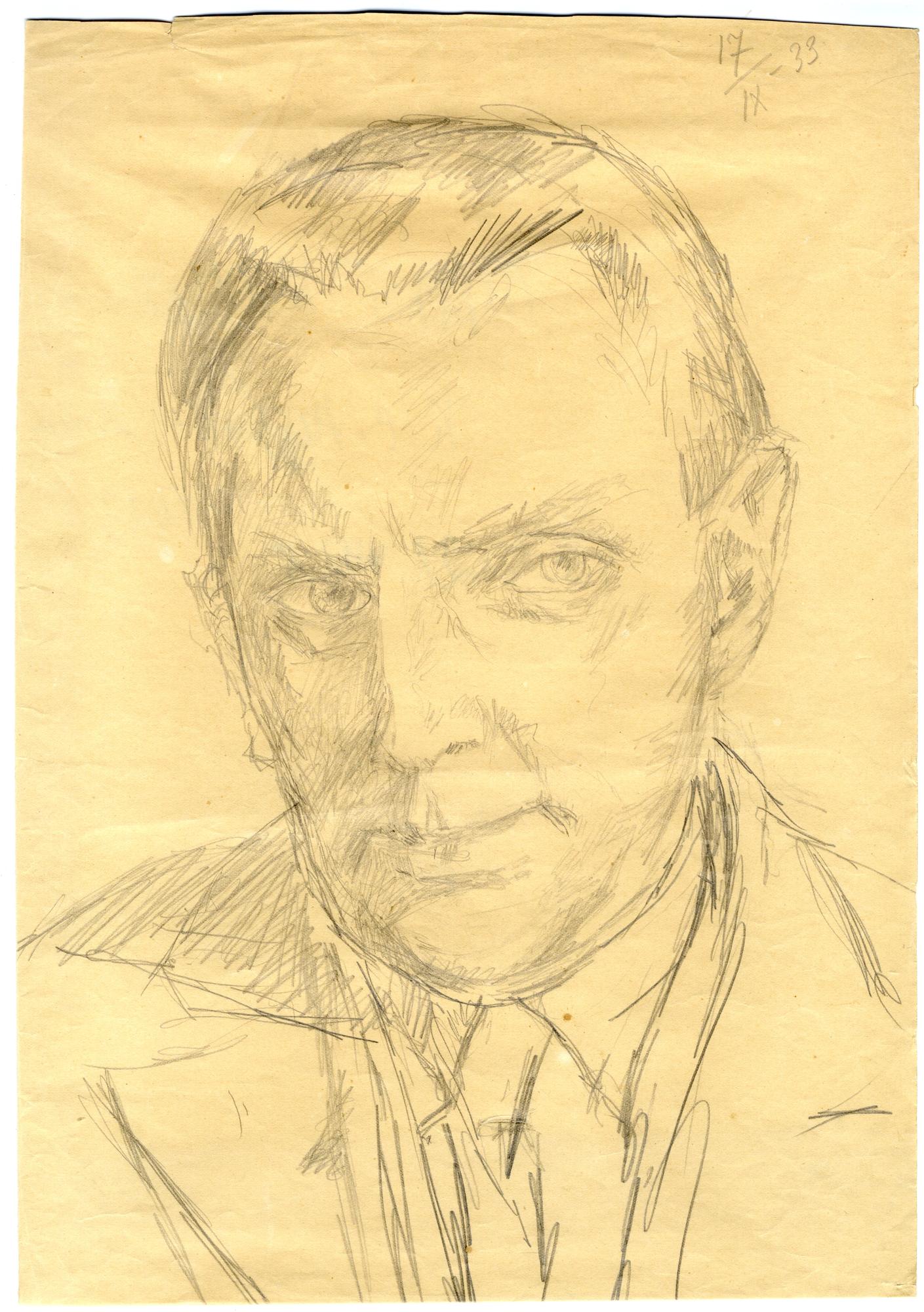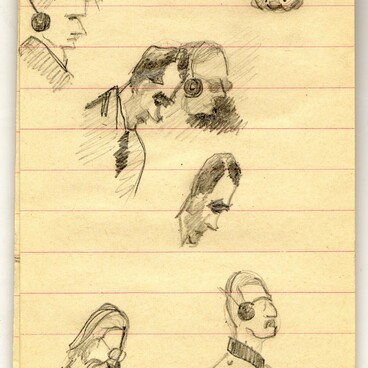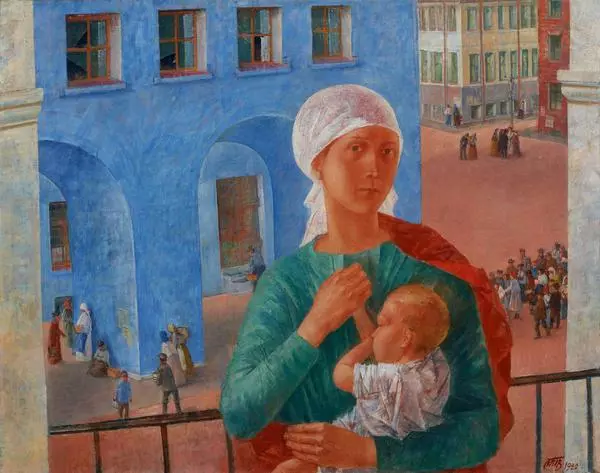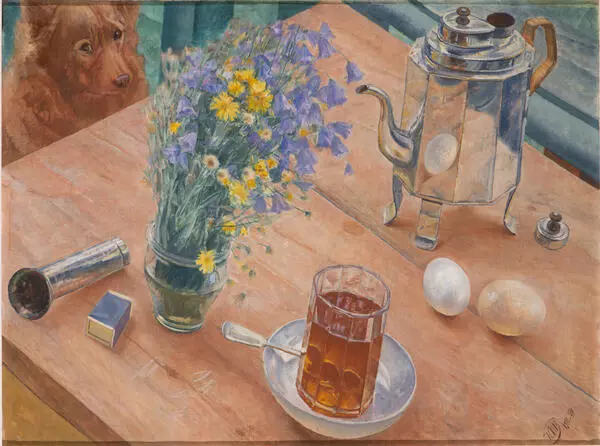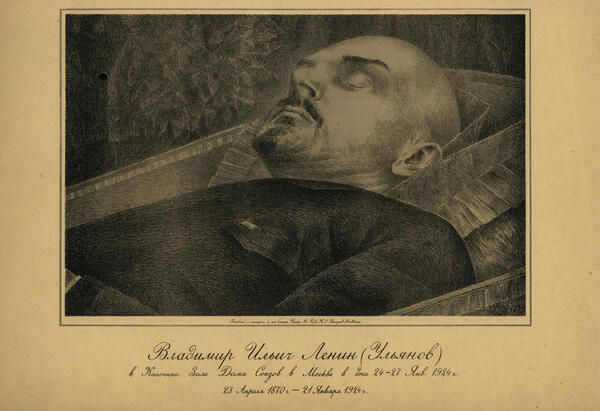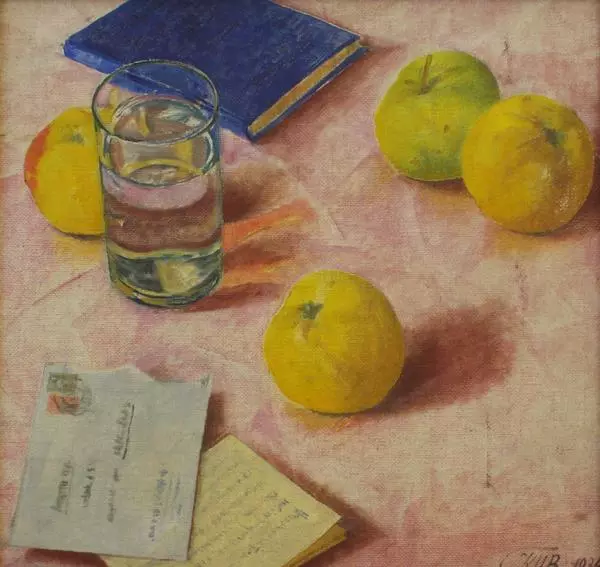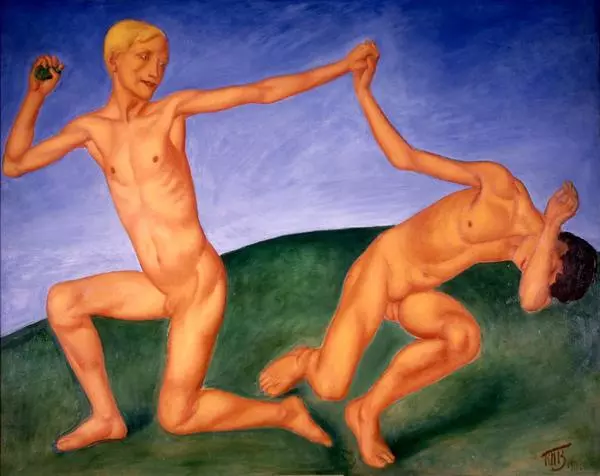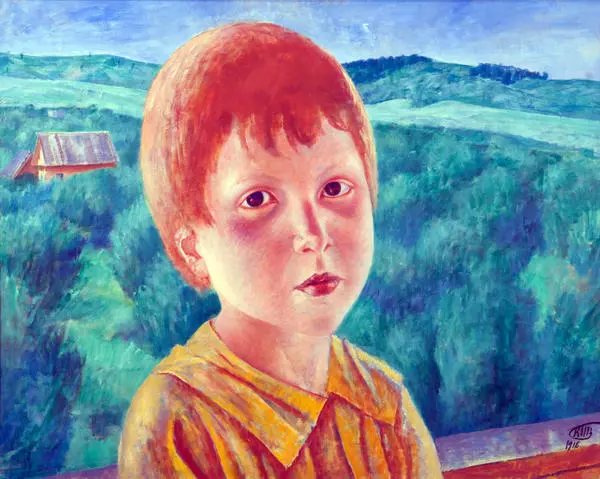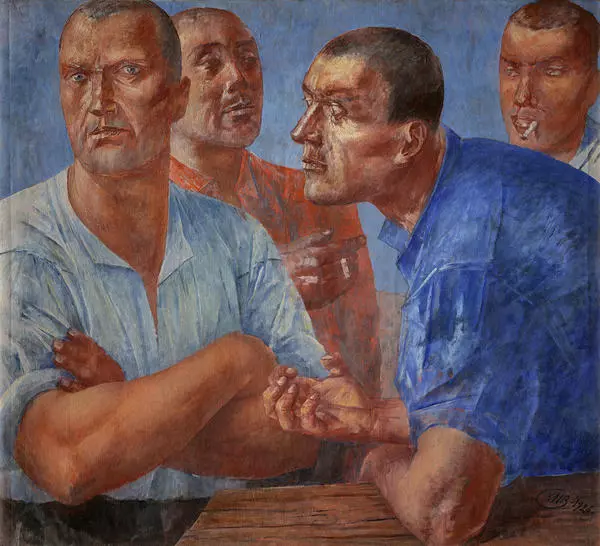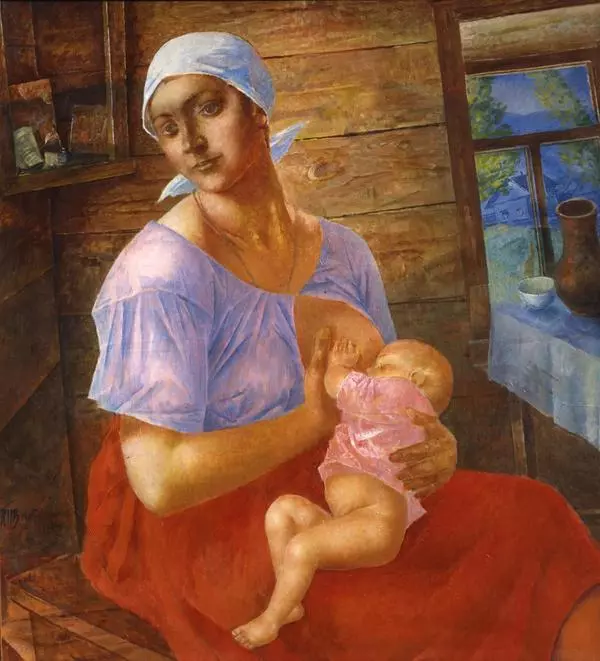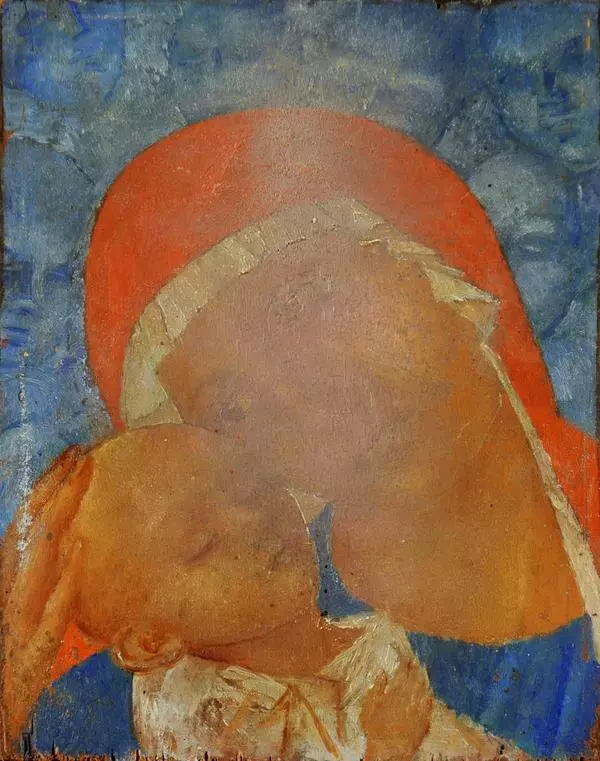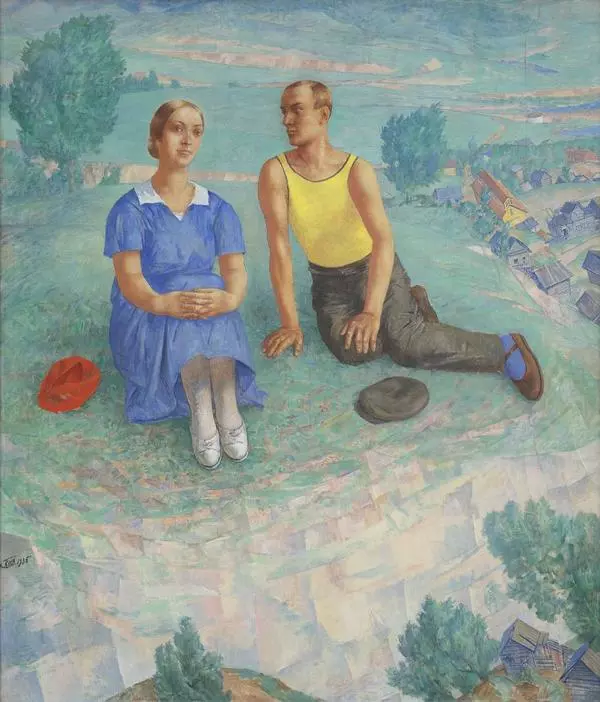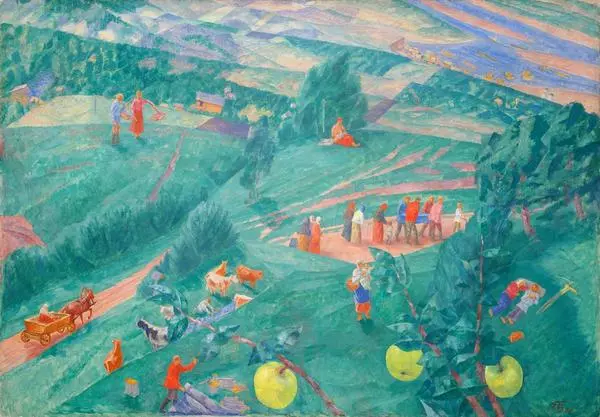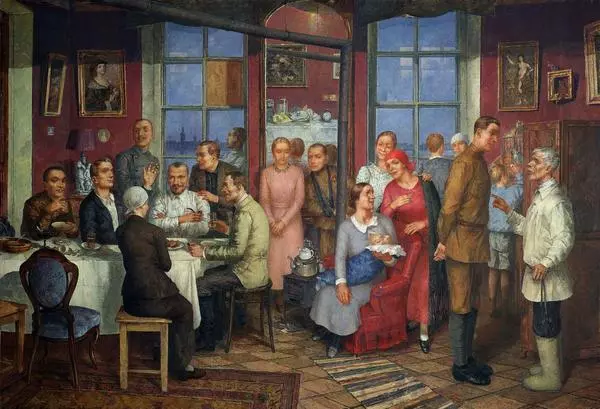Kuzma Petrov-Vodkin (1878–1939) met his fellow countryman Fedin in the late 1920s in Detskoye Selo (Children’s Village), where the artist lived during the final last years of his life. The two had a lot in common. They both grew up on the great Volga River, but more importantly, they were united by the breadth of their interests: both were engaged in artistic and literary activities, loved music and played the violin. What is more, they had both beaten death after having suffered from pulmonary tuberculosis.
The pencil drawing was intended as a sketch to the triptych portrait of the Soviet writers Konstantin Fedin, Alexei Tolstoy and Vyacheslav Shishkov. Petrov-Vodkin’s daughter Yelena recalled in her memoirs that the work had been commissioned from the United States, and that it was unusually difficult. All three characters in the portrait composition did not wish to occupy the places where the artist placed them, as if arguing with him and among themselves. Petrov-Vodkin was completely exhausted with the work. In the end, he did finish it, but the result was unexpected. ‘I don’t know what the Americans did to it, because the work was commissioned from America. In the end, the group portrait was of Pushkin, Andrei Bely and my father, ” Yelena wrote in her memoirs.
Petrov-Vodkin spent two days making sketches of Konstantin Fedin, on 17 and 18 September 1933. The artist masterfully captured and conveyed not only the external resemblance of the writer, but, most importantly, he also showed his inner focus and a certain reticence.
A year later, Petrov-Vodkin painted a separate portrait of Fedin in oil, 70×55cm in size. Unfortunately, that portrait has not survived. It was burned in a fire that broke out in the house of the artist’s widow after her daughter had forgotten to turn off the iron. The room burned was reduced to dust, along with 13 of the artist’s works, including the portrait of Fedin. The existence of the portrait became known from the letter of Maria Petrova-Vodkina dated September 1939. The widow wanted to give the portrait to Fedin in memory of her husband. Fedin had two sketches for the portrait left. The writer was particularly taken with one of them, the one you can see here. He framed the portrait and hung it above his writing desk in the study of his country house at Peredelkino.
The pencil drawing was intended as a sketch to the triptych portrait of the Soviet writers Konstantin Fedin, Alexei Tolstoy and Vyacheslav Shishkov. Petrov-Vodkin’s daughter Yelena recalled in her memoirs that the work had been commissioned from the United States, and that it was unusually difficult. All three characters in the portrait composition did not wish to occupy the places where the artist placed them, as if arguing with him and among themselves. Petrov-Vodkin was completely exhausted with the work. In the end, he did finish it, but the result was unexpected. ‘I don’t know what the Americans did to it, because the work was commissioned from America. In the end, the group portrait was of Pushkin, Andrei Bely and my father, ” Yelena wrote in her memoirs.
Petrov-Vodkin spent two days making sketches of Konstantin Fedin, on 17 and 18 September 1933. The artist masterfully captured and conveyed not only the external resemblance of the writer, but, most importantly, he also showed his inner focus and a certain reticence.
A year later, Petrov-Vodkin painted a separate portrait of Fedin in oil, 70×55cm in size. Unfortunately, that portrait has not survived. It was burned in a fire that broke out in the house of the artist’s widow after her daughter had forgotten to turn off the iron. The room burned was reduced to dust, along with 13 of the artist’s works, including the portrait of Fedin. The existence of the portrait became known from the letter of Maria Petrova-Vodkina dated September 1939. The widow wanted to give the portrait to Fedin in memory of her husband. Fedin had two sketches for the portrait left. The writer was particularly taken with one of them, the one you can see here. He framed the portrait and hung it above his writing desk in the study of his country house at Peredelkino.
